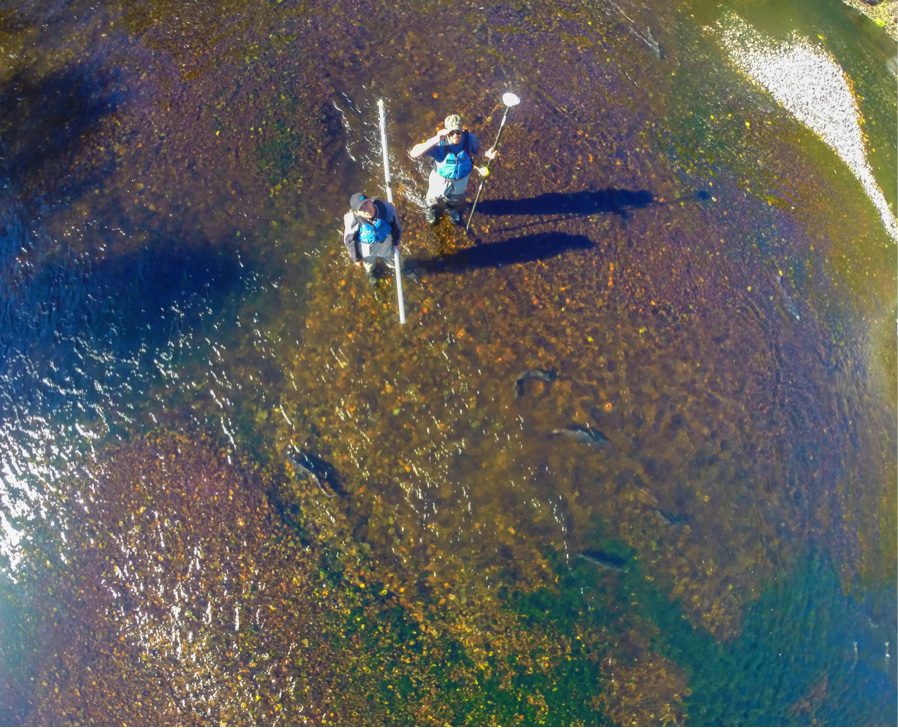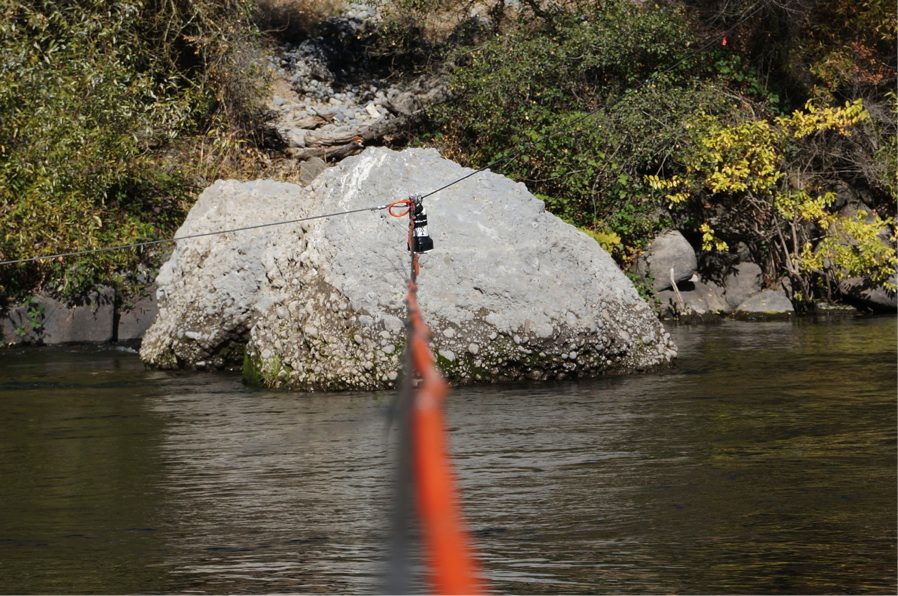Friday October 19, 2018
 With the fall salmon migration well underway, today’s Flashback Friday is a look back at our efforts to monitor salmon spawning from above with the help of a timelapse camera.
With the fall salmon migration well underway, today’s Flashback Friday is a look back at our efforts to monitor salmon spawning from above with the help of a timelapse camera.
We previously wrote about using time-lapse photography to record events that occur over an extended period (See Zipping through time). In an effort to record salmon spawning activity over the course of a spawning season, we suspended a camera above a gravel bed that we knew fall-run Chinook salmon would use to dig redds (nests) and deposit eggs. We set the GoPro Hero camera to snap an image at one-minute intervals over a two-month period. To hang the camera, we stretched a cable between two trees twenty feet over the water. A second cable was attached to a third tree to prevent the camera from swinging in the wind. We also ran a power cable along the suspension cable to a 12-volt deep-cycle battery (similar to a car battery) secured on the bank, where we could easily swap out the battery weekly – this allowed us to to operate the camera for an extended period of time. We were able to let out slack in the suspension cable and lower the camera within reach to replace the memory card on a weekly basis. The video segment below is a short compilation of a few highlights from the spawning season.
On the first day of recording, you will notice the gravel has a significant layer of algae growing on it from many months of sunlight penetrating the shallow water. But it doesn’t take long for large adult salmon to begin reaching their spawning destination and start stirring up the gravel. If you watch closely, you might catch a glimpse of our survey crew as they work their way downriver counting and mapping salmon redds. By the end of November, we counted and mapped 15 redds within the camera field of view. As the video illustrates, the salmon become covered with white fungus as they are slowly dying throughout the month of December. During the last few days of recording, a single female fish remained, diligently guarding her eggs. See if you can spot the common mergansers feeding in the area between 1:37-1:51. If we try this setup again next year, we will use a polarizing filter to cut through the glare on the water surface and test some different recording intervals to get details of fish behavior.

